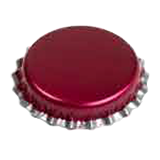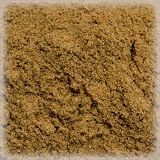Din kurv
Din kurv er tom
Vores krydderier
Vores sukker
Vores kapsler
-
 CC29mm TFS-PVC Free, Blå without oxygen scav.(7500/papkasse)
Tilføj kurv
CC29mm TFS-PVC Free, Blå without oxygen scav.(7500/papkasse)
Tilføj kurv
-
 CC26 mm, Rose with silver edge (10500/papkasse)
Tilføj kurv
CC26 mm, Rose with silver edge (10500/papkasse)
Tilføj kurv
-
 Kegcaps 64 mm, Yellow 4 Sankey S-type (EU) (1000/papkasse)
Tilføj kurv
Kegcaps 64 mm, Yellow 4 Sankey S-type (EU) (1000/papkasse)
Tilføj kurv
-
 Kegcaps 74 mm, White 86 Flatfitting A-type (700/papkasse)
Tilføj kurv
Kegcaps 74 mm, White 86 Flatfitting A-type (700/papkasse)
Tilføj kurv
-
 CC29mm TFS-PVC Free, Yellow with oxygen scav.(6500/papkasse)
Tilføj kurv
CC29mm TFS-PVC Free, Yellow with oxygen scav.(6500/papkasse)
Tilføj kurv
Ordliste
A device for dispensing draft beer using a pump operated by hand. The use of a hand pump allows the cask-conditioned beer to be served without the use of pressurized carbon dioxide.
Lingering bitterness or harshness.
Fermented beverage made from apples.
The hardness of water is equal to the concentration of dissolved calcium and magnesium ions. Usually expressed as ppm of (CaCO3).
Homebrew Bittering Unit. Measure of amount of hop bitterness added to beer. Alpha acids x ounces / gallons.
Foam that forms on top of the beer when it is poured. Head tends to indicate the degree of carbonation, hops, and malt in the beer.
The ability to hold a layer of foam on top of the beer. A beer with good head retention will maintain some residual foam until the beer has been completely consumed, leaving "lacework" down the sides of the glass.
The area at the top of a vessel (fermenter, bottle, or keg) which does not contain any liquid. In general, the goal is to minimize headspace, to prevent oxidation of the beer by oxygen in the air. Headspace in the primary fermenter is not a serious concern, because the CO2 produced by fermentation forms a protective blanket on top of the beer, and forces nearly all of the oxygen out of the fermenter. The headspace in a bottle is also sometimes referred to as ullage.
Commonly abbreviated as HERMS. A mashing system whereby mash temperature is controlled by circulating the liquid part of the mash through a heat exchanger. The main difference between a HERMS and a RIMS system is that in a HERMS system, the wort never comes into direct contact with the heating element; this supposedly results in less scorching, and a cleaner-tasting wort.
Equipment generally consisting of hundreds of plates or double layered coils, usually used after the boil for cooling wort quickly before yeast can be pitched in the wort.
A German word meaning "with". Used mostly in conjunction with wheat (weiss) beers to denote that the beer is bottled or kegged with the yeast in suspension (hefe-weiss). These beers are cloudy, frothy and, very refreshing.
A style of beer originally brewed in Germany; literally translated, means "yeast wheat", i.e. a yeasty wheat beer. Tradidional German Hefeweizen has a fruity, spicy flavor, which is produced by the unique strains of yeast used -- there is no actual fruit or spice added, as this would violate the Reinheitsgebot (German Beer Purity Law). Many of the Hefeweizens brewed by American microbreweries do not use the traditional yeast, and have a much cleaner (some would say bland) taste.
Sugar molecules of six carbon atoms. Glucose, fructose, lactose, mannose, galactose.
Hops which contain a high percentage (I believe the cutoff is generally considered to be around 8%) of alpha acids. High alpha hops are typically used for bittering rather than finishing, since the high alpha acid content means that less hops are needed to produce a given level of bitterness, and they also tend to have less refined flavor and aroma characteristics.
Highly modified malt contains few complex proteins many free amino acids and has a large amount of soluble starch available for conversion. The presence of free amino acids in the wort aids yeast growth. The absence of complex proteins also reduces the likelihood of haze problems in the finished product.
Cask holding 54 imperial gallons ( 243 liters ).
One who brews beer for personal consumption.
The art of making beer at home. In the United States, homebrewing was legalized by President Carter on February 1, 1979, by an act of Congress introduced by Alan Cranston. The Cranston Bill allows a single person to brew up to 100 gallons of beer annually for personal enjoyment and up to 200 gallons in a household of two persons or more aged 18 and older.
Organisms that metabolize only one specific carbon source.
A major component of the soft resins. When isomerized, these materials provide the main bitter compounds associated with beer. The alpha acid content varies widely among hop varieties from levels of 3 - 4% w/w in aromatic type hops to levels of 13 - 16% in the bitter hops.
Much is spoken of the quality and intensity of dried hop aroma. These are strong varietal characteristics. There appears to be a general relationship between the type and heaviness of a hop aroma and the flavour and aromatic properties of beer.
Sieve-like vessel used to strain out the petals of the hop flowers. Referred to as a hop jack in the United States.
A mesh bag in which hops may be placed. The hop bag is then placed in the boiling kettle (or the fermenter, in the case of dry hopping). Use of a hop bag helps contain the mess from the hops, but also reduces the efficiency with which hop bitterness, flavor, and aroma is extracted.
A soft resin component, beta-acids are not bitter in the natural or isomerized form. Some of the oxidation products do provide bitterness, and the beta-acids can be chemically transformed into light-stable bittering forms.
The alpha acids exist in three analogous forms, humulone, ad-humulone and co-humulone; and the proportions of these analogues vary markedly with variety. Varieties with relatively low co-humulone levels are strongly favoured.
Someone who likes a very heavily hopped beer.
A hop strainer.
The four major components of the essential oils and between them they account for about 60 - 80% of the essential oils for most varieties. The compounds are all highly volatile hydrocarbons and during boiling of the wort, most if not all of them are driven off and contribute only a little to hop flavour and aroma in beer. Therefore it is usually necessary to add late hops for additional aroma.
The fragrant odor of hops in beer.
A mixture of volatile aromatic compounds found in the lupulin glands of the hops; imparts hop flavor and aroma to beer.
Hops which have been ground, then extruded into pellet form. The most widely available form of hops. Pellets are easy to store, and yield slightly more bitterness than whole or plug hops, since the pelletizing process breaks down the structure of the hops, making the alpha acids easier to extract. Many brewers prefer plug or whole hops to pellets for finishing however, citing better flavor and/or aroma.
The small leaves projecting form the spindle of the hop cone, consisting of bracts and bracteoles.
Whole hops which have been compressed into (usually) 1/2 ounce discs. Sort of a compromise between whole hops and pellets.
Where available analytical figures on varietal sheets show the % of Alpha Acid remaining after 6 months storage at 68f. Oxidation of alpha acids removes their ability to be isomerized to the required bitter isomers. In comparable circumstances, some varieties lose a greater proportion of their alpha acids to oxidation than others do. Cold storage and anaerobic conditions can delay oxidation. Some oxidation of essential oil components is necessary to produce compounds thought to be important in beer flavours, so controlled ageing is important for hops required for both bittering and aromatic properties.
This characteristic varies widely with seasons, varieties and growths from 0.5 mls to about 3 mls per 100g of hops. While the soft resin compounds are responsible for providing the bitterness to a beer, the quantity and composition of the essential oils are responsible for the amount of hop flavour and aroma in the beer.
The amount of hops added to a specified volume of wort. Often referred to in BUs (bittering units).
A hop aroma or flavor of the essential oils of hops, which are derived from the lupulins of a hop flower. Ranging from floral to potpouri to piney to citrusy.
One of the two principal protein groups of barley. It is largely broken down into amino acids during mashing.
Proteins that coagulate and fall out of solution during the wort boil.
Hot water used in mashing and sparging.
Tank for heating and/or storing hot water for use in the brewing process.
The introduction of oxygen into the wort while it is still hot. In general, hot side aeration is considered to be a bad thing, as it can result in quick oxidation (staling) of the finished beer, which will cause "cardboardy" flavors.
The international unit for the total soluble extract of a malt, based on specific gravity. HWE is measured as liter*degrees per kilogram, and is equivalent to points/pound/gallon (PPG) when you apply metric conversion factors for volume and weight. The combined conversion factor is 8.3454 X PPG.
The absolute humidity is the amount of vapor actually present in the air and is expressed either in its expansive force, or in its weight per given volume.
One of the most plentiful of the many oils which give hops their characteristic aroma.
The protective outer layer surrounding a seed. The barley husk is important to the mashing process because it helps form the filtering grain bed. For this reason special care should be taken during grain crushing not to shred or pulverize the husks.
Drying, puckering (like chewing on a grape skin) feeling often associated with sourness. Tannin. Most often derived from boiling grains, long mashes, over-sparging or sparging with alkaline water. Also known as astringent flavor.
A pressure test which must be performed on CO2 tanks every 5 years. You cannot get a tank refilled if its pressure test is out-of-date.
Any compound made up entirely of carbon and hydrogen atoms.
A machine for clearing wort from trub.
A foul-smelling gas, chemical formula H2S, which has a distinct odor of rotten eggs. While hydrogen sulfide can be a sign of a bacterial infection, it is also produced as a normal fermentation by-product by certain yeast strains (especially lager strains). When produced as a part of normal fermentation activity, the odor eventually dissipates.
The process of dissolution or decomposition of a chemical structure in water by chemical or biochemical means.
A device that measures specific gravity (SG) of a liquid. Hydrometers are usually calibrated for measurements at 60°F. If what you are measuring is not at this temperature, you should use a hydrometer correction table. Approximately the correction amount is (Temperature-1.8)x.03 (e.g. (77°F-1.8) x .03 = 2.2 take the FG and add 2.2 to get the calibrated SG).
A compound, usually alkaline, containing the OH (hydroxyl) group.
The active ingredient in household bleach.













 HMEZAD Hops - Certificate allergens in hops 2022
HMEZAD Hops - Certificate allergens in hops 2022
 Hmezad Hops, Certificate ISO 9001:2015 (2025)
Hmezad Hops, Certificate ISO 9001:2015 (2025)
 Barth Haas Hops: Statement on Mycotoxins and Heavy metals 2022
Barth Haas Hops: Statement on Mycotoxins and Heavy metals 2022
 Fermentis Yeast Manufacturing Statement 2023
Fermentis Yeast Manufacturing Statement 2023
 ChF Hops Conformity Certificate
ChF Hops Conformity Certificate



